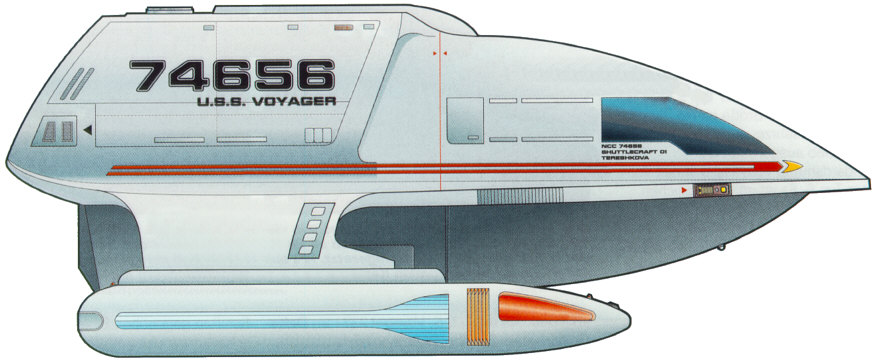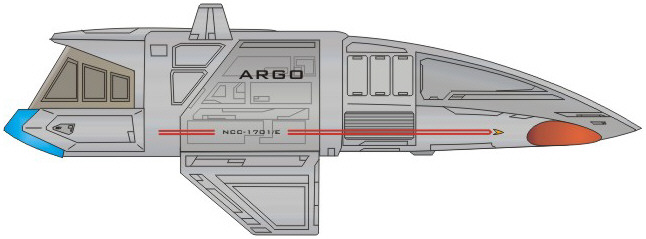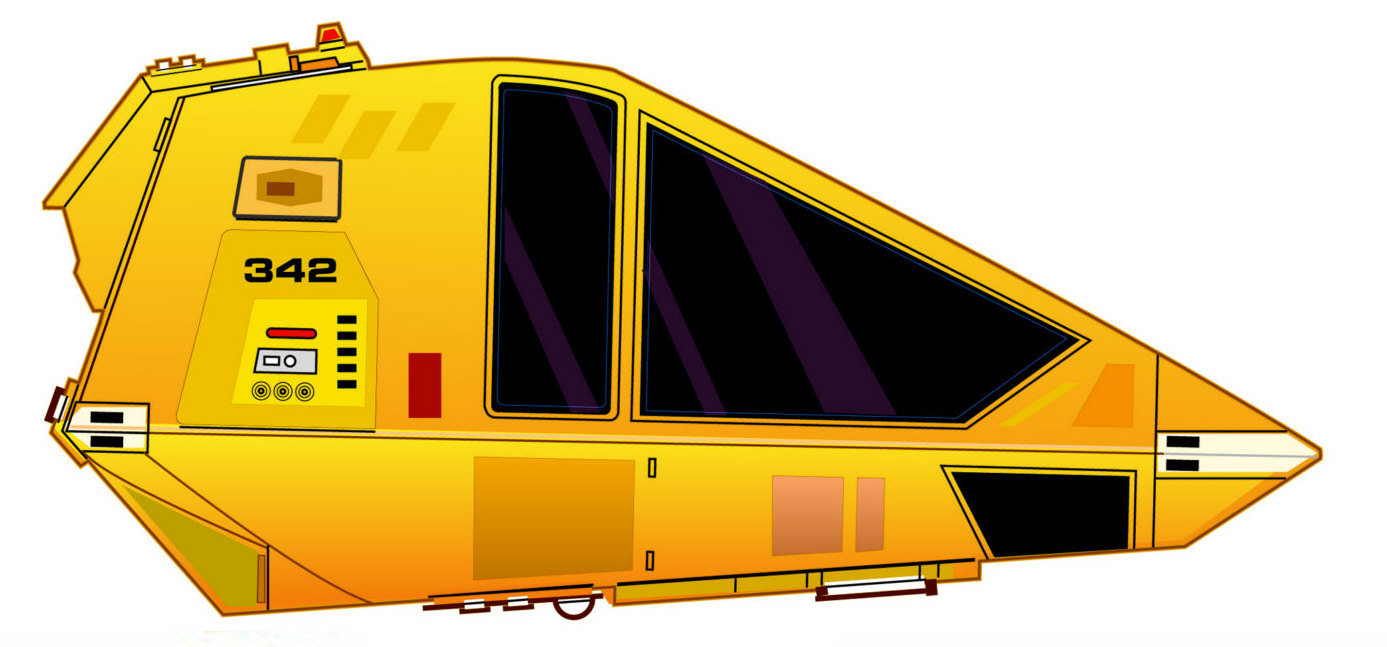Auxiliary Craft
Created by Captain Aviram Drell on Fri Mar 13th, 2020 @ 1:28pm
The Vesta is equipped with a veritable ‘fleet’ of auxiliary craft meant to assist the crew in carrying out their mission. These range from the smaller, single-occupant maintenance craft to standard personnel shuttles to even larger runabouts and transports. Most are launched, recovered, stored, and maintained in three hangar facilities located toward the rear of the ship’s stardrive section.
Although the type and combination of auxiliary craft is ultimately determined by the commanding officer, with input from the chief flight operations officer, and can vary from ship to ship, the standard number of craft carried by the Vesta-class is as follows:
Below is information on the specific craft currently assigned to the Vesta.
Type 8 short-range shuttlecraft (4)

Based on the older Type 6 design, the Type 8 short-range shuttlecraft was introduced in the late 2360s as one of the more successful follow-ups in the realm of general utility warp shuttles. It is slightly larger than its predecessor and capable of supporting two crew up front as well as an additional six passengers in the rear compartment. The Type 8 is also equipped with a medium-range transporter and light armaments to defend itself against minor threats, natural or otherwise.
Type 8 shuttlecraft assigned to the Vesta are named for civil rights leaders and other major social reformers.
Type 9 short-range shuttlecraft (7)

The Type 9 short-range shuttlecraft was first introduced in the late 2360s alongside the Type 8 as part of the Intrepid-class starship development program. It was designed to be a more compact shuttle, one that sacrificed space and comfort for greater speed, maneuverability, and sensor capabilities. Seating for two crew as well as up to two additional passengers allows the Type 9 to fill the role of a standard personnel shuttle, albeit less ably than one of its larger counterparts. These craft are equipped with a more robust deflector array and more powerful phaser emitters which ensure that it can defend itself when necessary.
Type 9 shuttlecraft assigned to the Vesta are named for notable Federation ambassadors.
Type 11 long-range shuttlecraft (4)

The Type 11 long-range shuttlecraft was first introduced in the early 2370s as part of the Sovereign-class development project to meet the need for larger, multi-purpose embarked craft. Building upon the lessons of earlier designs such as the Type 8, Type 9, and Danube-class, the Type 11 has been equipped with an impressive array of offensive and defensive systems as well as a more refined propulsion system. Spaces within the shuttle itself are semi-modular and can be adapted for a variety of missional needs. In standard configuration, the Type 11 can comfortably support four crew as well as several additional passengers for extended duration flights.
Type 11 shuttlecraft assigned to the Vesta are named for notable scientists.
Flyer-class scout ship (2)

Based on the Delta Flyer constructed by the crew of the USS Voyager in 2375, the Flyer-class scout ship is an advanced auxiliary craft designed for reconnaissance and other long-range operations away from its host vessel or installation. It is well-equipped to deal with a variety of hazards and environments including spatial phenomena, atmospheric flight, and even combat. Facilities aboard the Flyer-class can support up to six crew and passengers for an extended duration.
Flyer-class scouts assigned to the Vesta are named for minor Roman goddesses.
Argo-class transport (2)

The Argo-class heavy transport shuttle was first introduced in the late-2370s. Its primary role was to provide orbital transport for materials when beaming was unavailable or inadvisable. To assist with this, the Argo-class was explicitly designed to support the deployment of a specialized four-wheeled all-terrain buggy. The Argo-class can comfortably seat at least four crew along with space for cargo and one buggy during normal operations.
Argo-class transports assigned to the Vesta are named for (Roman) virtues.
Workbee-class maintenance craft (8)

The Workbee-class maintenance craft is a stand-alone craft used for the assembly, repair, and inspection of hardware. A pair of robotic manipulator arms is folded beneath the main housing and allows for work to be done through pilot-manipulated controls. In addition, the Workbeeis capable of utilizing an attachment that makes it ideal for transferring cargo.
Categories: USS Vesta Reference